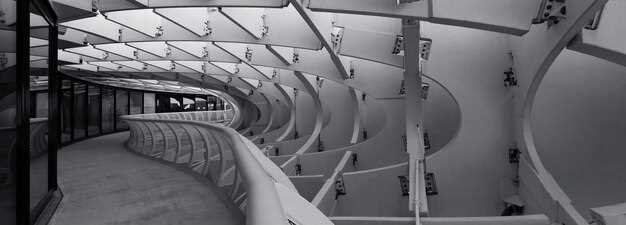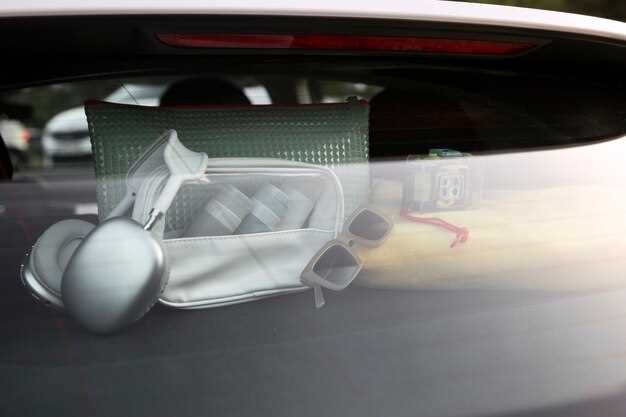
Wind tunnel testing is a crucial aspect of race car design, playing an integral role in the development of high-performance vehicles. By simulating real-world aerodynamic conditions, engineers can analyze how air interacts with the car’s surface, allowing for a deeper understanding of drag, downforce, and overall stability. This process not only helps in identifying potential design flaws but also enhances the vehicle’s efficiency on the track.
During wind tunnel testing, scale models or full-sized race cars are placed in a controlled environment where airflow can be meticulously studied. Engineers utilize sophisticated sensors and instruments to gather data on various parameters, including air pressure distribution and turbulence patterns. These insights enable designers to make informed decisions about modifications, ensuring that every component of the car contributes to its performance and competitiveness.
The benefits of wind tunnel testing extend beyond just performance metrics; it also facilitates the exploration of innovative designs. By experimenting with different shapes and configurations, teams can push the boundaries of conventional race car aesthetics while maximizing aerodynamic effectiveness. As racing technology continues to evolve, the importance of wind tunnel testing in achieving cutting-edge designs cannot be overstated.
Understanding Aerodynamic Principles for Optimized Race Car Performance

Aerodynamics plays a crucial role in the performance of race cars, significantly impacting speed, stability, and fuel efficiency. By understanding the fundamental principles of aerodynamics, engineers can design vehicles that minimize drag and maximize downforce. Drag is the aerodynamic resistance that opposes the car’s motion, while downforce increases traction by pushing the car onto the track. Balancing these forces is essential for optimal performance.
The shape of a race car, known as its profile, greatly influences aerodynamic behavior. A streamlined design reduces turbulent airflow, which decreases drag and enhances speed. Features such as spoilers and diffusers can be strategically utilized to generate downforce, allowing for better cornering capabilities without sacrificing straight-line speed.
In summary, grasping aerodynamic principles is essential for achieving optimized race car performance. Through careful design and testing, engineers can leverage aerodynamics to reduce drag, increase downforce, and ultimately deliver a vehicle that excels on the racetrack.
Choosing the Right Wind Tunnel: Key Features and Considerations

When selecting a wind tunnel for race car design, several key features must be evaluated to ensure the most accurate aerodynamic testing results. One of the primary considerations is the size of the wind tunnel. The dimensions should accommodate the full scale of the race car, allowing for a realistic airflow interaction. A larger test section provides more flexibility for positioning the vehicle and testing various configurations.
The speed range of the wind tunnel is another critical factor. Different race cars may perform optimally at various speeds, so a tunnel that can simulate a wide range of velocities will provide more comprehensive aerodynamic data. Look for facilities with adjustable speed settings to match specific testing requirements.
Control of airflow quality is essential in aerodynamics testing. A high-quality wind tunnel should have features that minimize turbulence and ensure laminar flow, as these conditions closely mimic real-world scenarios. The design of the fan system, the presence of flow straighteners, and the smoothness of the test section all contribute to achieving these optimal conditions.
Additionally, consider the measurement capabilities of the wind tunnel. Advanced instrumentation, such as precision pressure sensors and force balances, is crucial for accurately capturing aerodynamic forces and moments. The availability of real-time data analysis and visualization tools can significantly enhance the testing process and decision-making.
Lastly, the reputation and expertise of the facility can influence the choice of wind tunnel. Collaborating with experienced engineers and technicians can provide valuable insights and recommendations, ensuring that the aerodynamic testing aligns with the team’s overarching design objectives.
Interpreting Wind Tunnel Data: Applying Insights to Design Modifications
Interpreting wind tunnel data is crucial in the race car design process. Engineers analyze the results from testing to understand airflow patterns, drag coefficients, and downforce generation, which are essential for optimizing a vehicle’s performance on the track.
The first step in interpreting data is to evaluate the aerodynamic coefficients obtained during testing. These coefficients provide insights into how the car interacts with air at different speeds. By comparing data from various design iterations, engineers can identify which modifications lead to improvements in both speed and stability.
One of the key metrics observed is drag force, which directly impacts fuel efficiency and top speed. Understanding how design elements, such as spoilers or body shapes, influence drag allows for targeted modifications. For instance, reducing the frontal area or optimizing the underbody can lead to significant reductions in drag.
Another critical aspect is the assessment of downforce, which enhances traction and cornering ability. Engineers carefully study the lift-to-drag ratio, enabling them to balance aerodynamic efficiency with the necessary grip on the track. Insights drawn from wind tunnel data inform tweaks to wings and diffusers to maximize downforce without incurring excessive drag.
Furthermore, engineers often utilize Computational Fluid Dynamics (CFD) simulations to complement wind tunnel findings. By cross-referencing data, they can validate outcomes and refine their designs more effectively. This combination of experimental testing and computational analysis creates a robust feedback loop, leading to optimized race car designs.
In summary, interpreting wind tunnel data is a vital aspect of race car development. By focusing on aerodynamic coefficients, drag reduction, downforce enhancement, and leveraging CFD, engineers apply insights that lead to significant design modifications, ultimately improving race performance.
